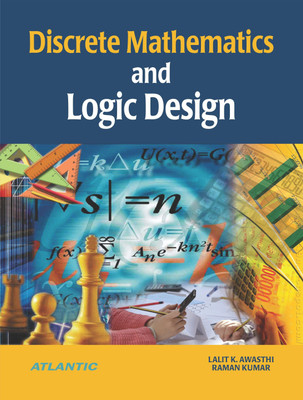Discrete Mathematics and Logic Design(English, Paperback, Lalit K. Awasthi)
Quick Overview
Product Price Comparison
A discrete mathematics course has more than one purpose. Students should learn a particular set of mathematical facts and how to apply them; more importantly, such a course should teach students how to think logically and mathematically. To achieve these goals, the book Discrete Mathematics and Logic Design has been written which stresses on mathematical reasoning and the different ways problems can be solved. The book interweaves the five important elementsŌĆömathematical reasoning, combinatorial analysis, discrete structures, algorithmic thinking, and applications and modeling; and it carefully blends and balances all these five elements. Mathematical reasoning is very essential in order to read, comprehend, and construct mathematical arguments. This book starts with a discussion of mathematical logic, which serves as the foundation for the subsequent discussions of methods of proof. An important problem-solving skill is the ability to count or enumerate objects. The discussion of enumeration in this book begins with the basic techniques of normal form and quantifier; and the stress has been given on performing combinatorial analysis to solve counting problems and analyse algorithms. Discrete structures are the abstract mathematical structures used to represent discrete objects and relationships between these objects. These discrete structures include sets, permutations, relations, graphs, trees, and finite-state machines. This book covers all these in a very systematic way. The overall coverage of the book is extensive and it contains Propositional Logic, Normal Form and Quantifier, Set Theory, Relations and Function, Lattice and Hasse Diagram, Graphs and Planner Graphs, Trees, Permutation and Combination, Mathematical Induction, Groups and Subgroups, Ring and Field, Recurrence Relation and Generating Function, and Boolean Algebra. The presentation of the book is good and all the topics discussed have been arranged systematically with equal emphasis to each and every topic. This book can be easily read and understood by beginning students and there are no mathematical prerequisites beyond basic algebra for almost all the content of the book. The writing style in this book is direct and pragmatic. Precise mathematical language is used without excessive formalism and abstraction. Care has been taken to balance the mix of notation and words in mathematical statements. All definitions and theorems in this book are stated extremely carefully so that students will appreciate the precision of language and rigor needed in mathematics. The book also contains ample number of solved examples for better understanding of the concepts of concerned subject.


